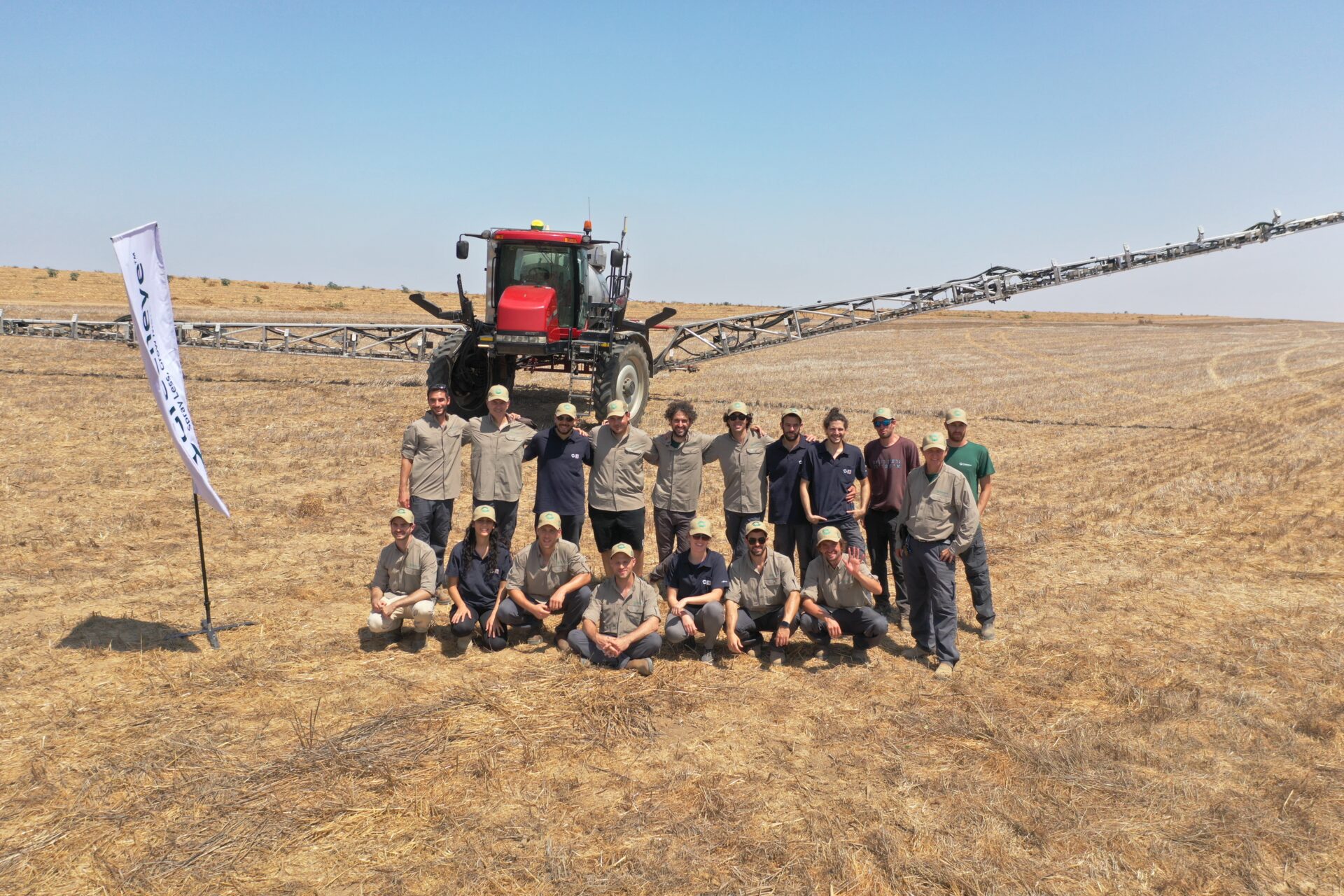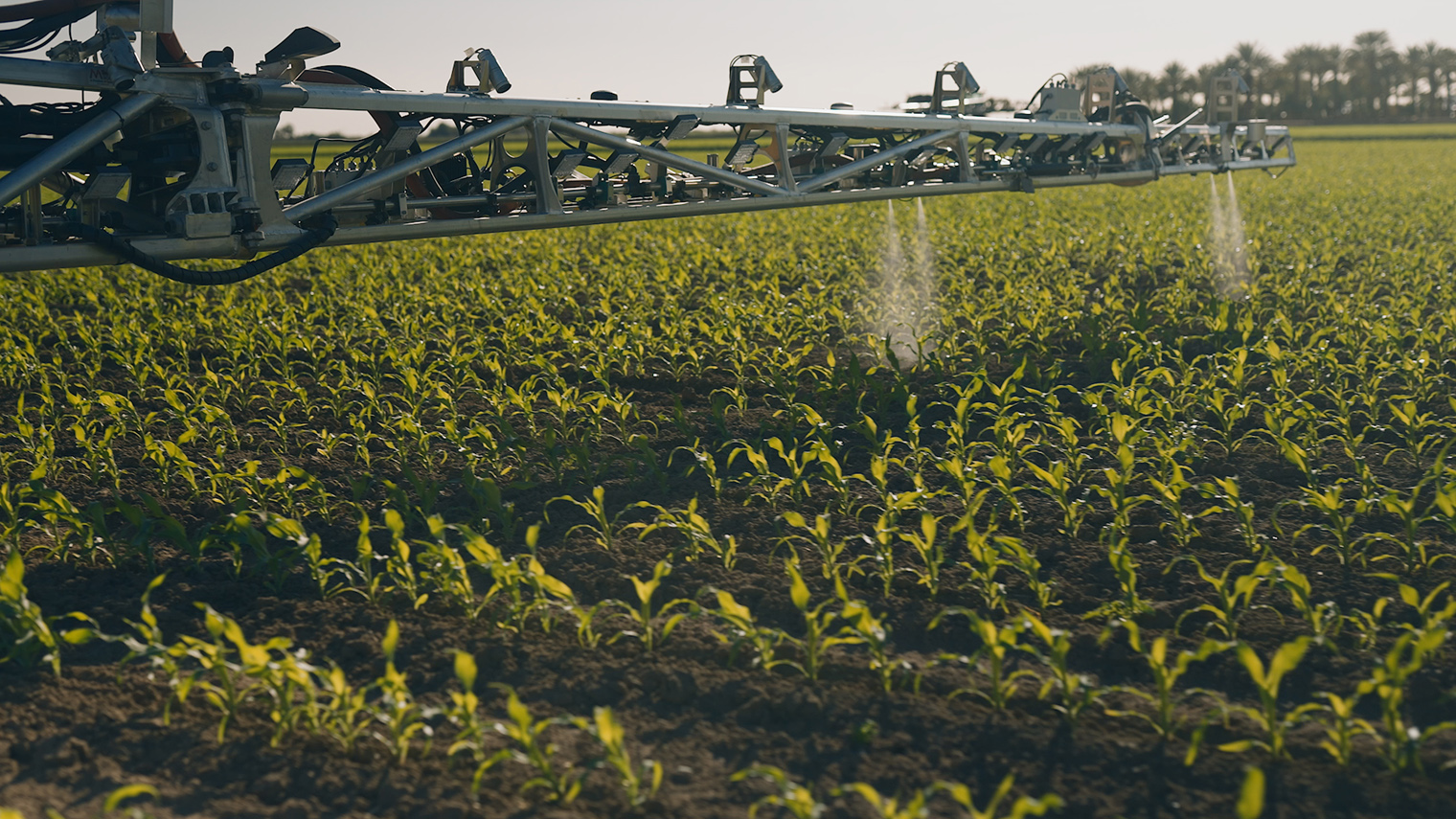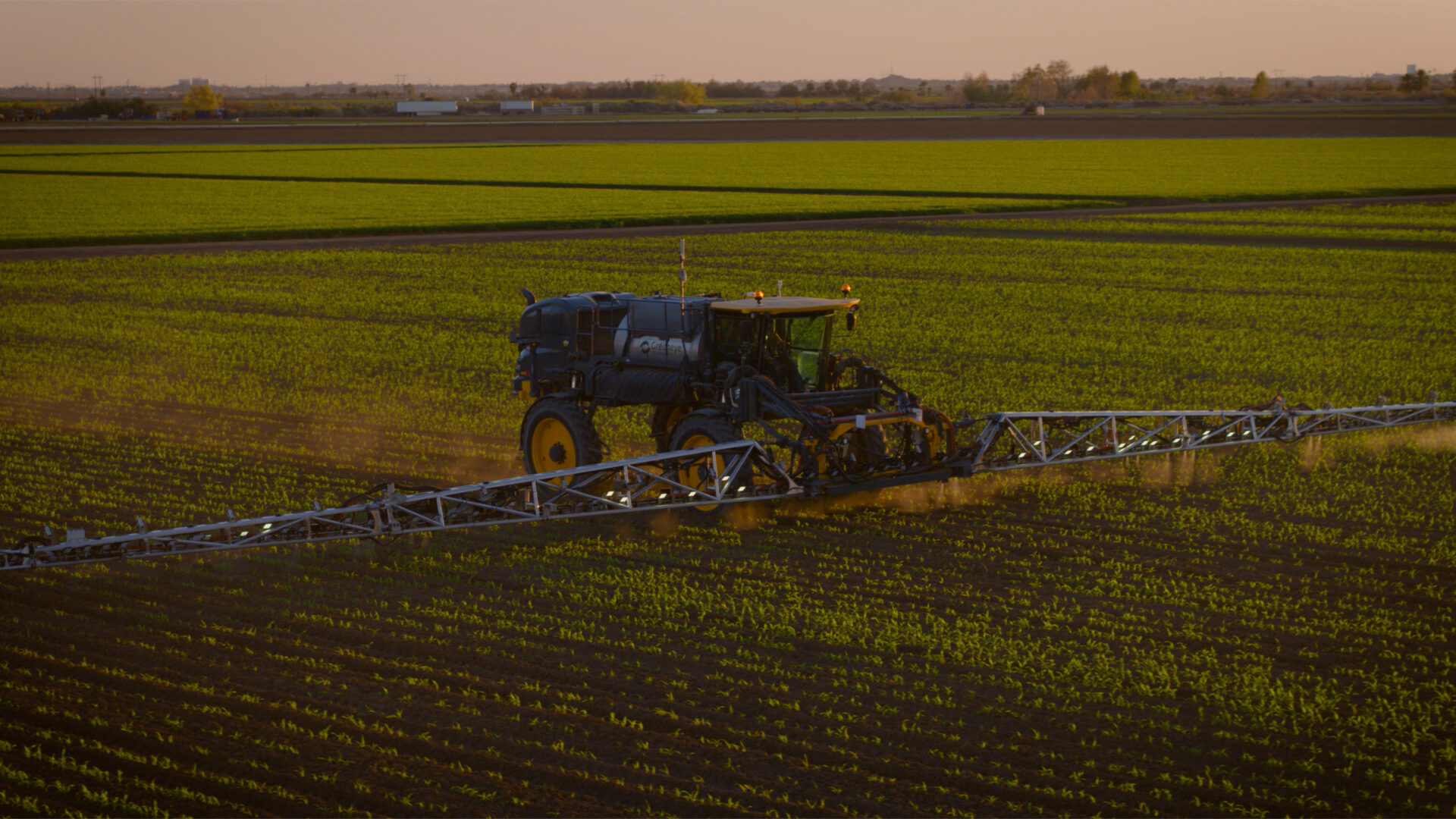- Israel-based precision agtech company Greeneye Technology has raised $20 million to scale up operations in the US, bringing its total funding to date to $45 million.
- Deep Insight, an Israeli investment company, led the round with participation from existing investors Syngenta Group Ventures, JVP, Orbia Ventures, and Mellanox (now part of Nvidia) founder Eyal Waldman.
- New investors including Iron Nation and Farmers Business Network founder and former CEO Amol Deshpande also participated.
- Greeneye will use the funding to scale up its operations in the US and introduce new features and capabilities to its system.

Farmers are ‘running out of tools’ to manage weeds
Whether it’s herbicide-resistant weeds, the rising cost of production, or environmental concerns, farmers increasingly face challenges when it comes to spraying chemical herbicide via conventional broadcast.
Greeneye’s technology, which can be retrofit to work on most existing machines, can detect and spray only those areas with weeds, rather than hitting crops or bare ground, as broadcast methods do.
“A big concern today for farmers is, they’re running out of tools to manage the weeds on the farm because of resistance,” explains Greeneye CEO Nadav Bocher. “This opens a world of opportunities, especially with the configuration we offer.”
Efficacy, he says, is a big part of the narrative nowadays, in addition to saving money and limiting damage to the environment.
“Farmers are getting excited about this technology not only because of the savings (that’s definitely a very attractive piece), but also because of the options it opens as far as weed control,” he tells AgFunderNews.
‘An inflection point’ for Greeneye
Greeneye launched its technology in early 2022 and, in the same year, joined FBN’s Innovators Research League, a major field-trial program in North America.
Bocher says this latest fundraise is all about scaling the operation, particularly across the US market. “We are now moving through the 2024 season, and this is kind of an inflection point from Greeneye’s perspective to get to deployment of dozens of systems out in the field.”
The company aims to get its machines onto 200 million acres of broadacre cropland in the US this year. Greeneye has focused primarily on corn and soybeans in past years; in 2024, it has also added cotton to its list of crops.
Bocher notes that the company already has “a very full pipeline of farmers waiting for these machines,” which are sold out for 2024. Many of the machines for the 2025 season are already allocated, he adds.

‘We’re crystal-focused on the aftermarket approach’
Part of Greeneye’s mainstream appeal, says Bocher, is its “aftermarket approach” to precision technology — that is, “taking existing machines, regardless of what color, brand, or model, and retrofitting them with Greeneye technology to enable precision application of chemicals. We’re crystal-focused on the aftermarket approach.”
“We take machines and install sets of eyes and brains on them. The first commercially viable application today is to precisely spray the chemical just on the weeds, but really, there’s much more we can do with it. There’s a lot of exciting additional capabilities that are coming that way.”
Starting with the 2024 season, Greeneye’s technology will not only be able to spray weeds but also apply other inputs onto crops such as fungicides and micronutrients.
Today, these inputs are typically broadcast across a field, says Bocher. “In many cases, there is no reason for that and [with Greeneye technology] you can apply just on the crop and gain additional savings.”
The addition of these inputs is also another step in “moving from optimizing herbicide application to being cross-chemical, cross-applied, where it’s needed, how much it’s needed, with the technology we build,” he adds.

Investing in ‘back to basics’ companies
Bocher agrees there’s been “a very noticeable change in the market from 2021 to where we are today,” and that it is challenging to fundraise in the current environment.
That said, Greeneye’s technology has certain advantages when it comes to attracting investors, he claims.
“Investors right now are trying to focus on tangible values, on places where they can see the economics, where they can understand the business, they can see the business groups,” he says. “This is one of the key strengths we can offer, having a very clear return on investment that we offer our customers, having a clear competitive differentiation as an aftermarket solution.
“People think of the Greeneye system as a lot of algorithms, but this is only one part of it. Almost every component of our system — cameras, GPU, slides, nozzles, the boom itself — is entirely designed and manufactured by Greeneye. That creates a lot of intellectual property, a lot of advantage on the unit economics and profitability. I feel like investors were able to appreciate that when the market is down and just go back to basics.”
Greeneye is the first foray into the agricultural space for Deep Insight, which has invested in semiconductors, alternative materials, quantum technologies and biotech, to name a few.
“They spent a lot of time with us just understanding the tech, getting a good idea of the complexity of the tech and that it’s not just something that you can build very quickly,” says Bocher. “That’s really what fit well into their existing deep tech fund.”
“Building safe and resilient food systems that are capable of feeding a growing global population is of the utmost importance, and it starts by equipping farmers with the tools they need to transition to new practices,” notes Barak Ben Eliezer, managing partner at Deep Insight.
“Not only does Greeneye understand this, but it has succeeded where others have not by bringing to market a viable precision spraying solution that is easy and affordable for farmers to implement into their existing operations. From a strategic point of view, Greeneye has also proven that it has a very clear understanding of the milestones it needs to reach in order to drive mass adoption of its technology, and it has achieved those milestones time and time again.”



